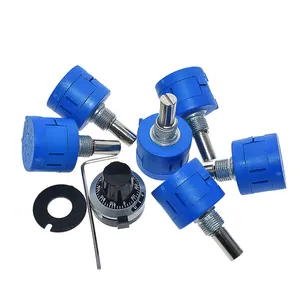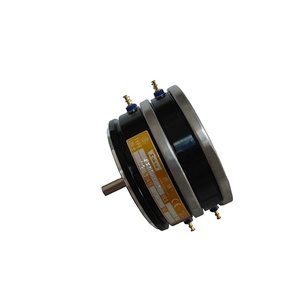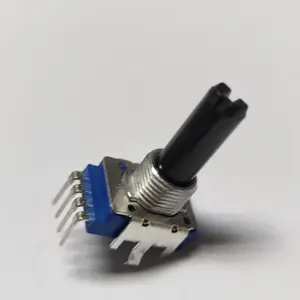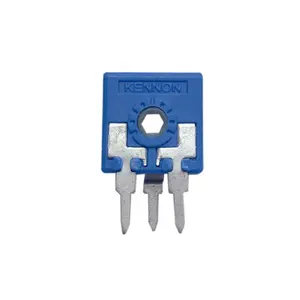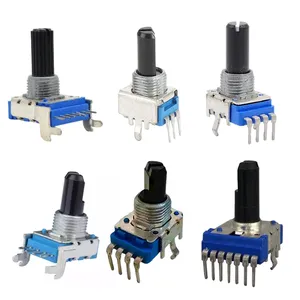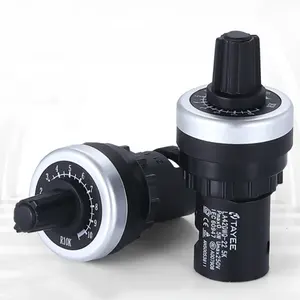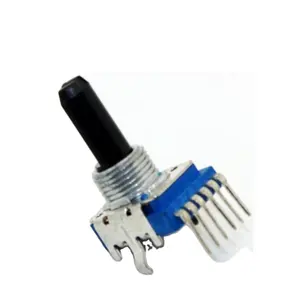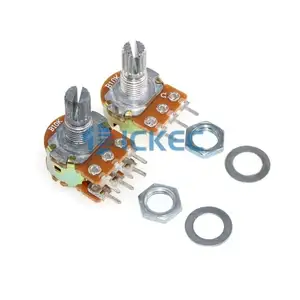Digital Potentiometer I2c Arduino
















 1/16
1/16










 1/37
1/37




























 1/14
1/14



About digital potentiometer i2c arduino
Where to Find Digital Potentiometer I2C Arduino Suppliers?
China remains a central hub for semiconductor and electronic component manufacturing, with Shenzhen-based suppliers dominating the market for integrated circuits such as digital potentiometers compatible with I2C and Arduino platforms. The city’s electronics ecosystem—supported by dense supplier networks, rapid prototyping capabilities, and streamlined logistics—enables efficient sourcing of precision ICs used in automation, signal conditioning, and embedded control systems.
Suppliers in this segment operate within vertically integrated supply chains, offering access to both original manufacturer components and BOM (Bill of Materials) services for system integration. Key advantages include low minimum order quantities (MOQs), often starting at 1–2 pieces, competitive pricing ranging from $0.08 to $7.69 per unit depending on specifications, and fast response times averaging under two hours. This infrastructure supports agile development cycles for engineers and procurement teams working on IoT devices, industrial sensors, and educational electronics projects.
How to Choose Digital Potentiometer I2C Arduino Suppliers?
Procurement decisions should be guided by objective evaluation criteria focused on technical reliability, transactional performance, and operational responsiveness:
Technical Compatibility Verification
Confirm that components support standard I2C communication protocols and are functionally compatible with Arduino-based microcontrollers. Common part numbers include AD52xx, DS35xx, and X92xx series devices, offering tap counts from 64 to 256 positions and resistance ranges between 10 kΩ and 100 kΩ. Request datasheets and application notes to validate interface compatibility, power requirements, and non-volatile memory features where applicable.
Production and Sourcing Transparency
Assess supplier capabilities through verifiable metrics:
- On-time delivery rates exceeding 94% indicate reliable fulfillment performance
- Response times ≤2 hours reflect strong customer engagement capacity
- Reorder rates below 30% suggest stable buyer satisfaction without over-reliance on repeat clients
Prioritize suppliers listing active inventory across multiple product lines, particularly those specializing in analog ICs and data acquisition components.
Transaction and Quality Assurance
Favor suppliers with documented quality control processes and transparent transaction histories. While formal certifications like ISO 9001 or RoHS compliance are not explicitly stated in available data, consistent on-time delivery (100% reported by three suppliers) serves as an indirect indicator of internal process discipline. For high-volume procurement, request sample testing to verify solderability, electrical accuracy, and long-term stability under operating conditions.
What Are the Best Digital Potentiometer I2C Arduino Suppliers?
| Company Name | Main Products | Online Revenue | On-Time Delivery | Avg. Response | Reorder Rate | Min. Order Quantity | Price Range (USD) |
|---|---|---|---|---|---|---|---|
| Shenzhen MINCONDA Technology Co., Ltd. | Power Management ICs, Microcontrollers, FPGA, Memory | US $40,000+ | 100% | ≤1h | <15% | 1 piece | $0.10–1.00 |
| Shenzhen Origin Technology Co., Ltd. | Other ICs, Capacitors, LED Drivers, FPGA | US $30,000+ | 100% | ≤2h | <15% | 1 piece | $1.10–8.26 |
| Shenzhen Huaxia Forest Technology Co., Ltd. | Other ICs, Camera Modules, Development Boards | US $20,000+ | 94% | ≤2h | 28% | 1 piece | $0.65–6.93 |
| Shenzhen Biguang Tech Co., Ltd. | Oscillators, DC-DC Converters, FPGA, Microcontrollers | US $4,000+ | 100% | ≤2h | 16% | 2 pieces | $0.083–3.26 |
| Shenzhen Fujiang Electronics Co., Ltd. | Other ICs | US $2,000+ | 71% | ≤5h | 66% | 1 piece | $0.60–5.79 |
Performance Analysis
Shenzhen MINCONDA and Shenzhen Origin stand out for their 100% on-time delivery records, sub-2-hour response times, and low reorder rates, indicating high initial satisfaction and scalable operations. Both offer single-piece MOQs and competitive pricing, making them suitable for prototyping and small-batch production. Shenzhen Huaxia Forest provides broader product diversification into development boards, aligning well with Arduino-centric design workflows. In contrast, Shenzhen Fujiang Electronics shows higher reorder activity (66%) but slower response and lower delivery reliability, suggesting potential service inconsistencies despite stock availability. Buyers prioritizing cost efficiency may consider Shenzhen Biguang Tech, which offers the lowest per-unit prices starting at $0.083, though with a 2-piece minimum order.
FAQs
How to verify digital potentiometer supplier reliability?
Evaluate suppliers based on documented delivery performance, response speed, and product specificity. Cross-reference listed components against known manufacturer part numbers (e.g., Analog Devices AD5259, Maxim DS3502). Request technical documentation and conduct functional testing on initial samples to confirm I2C addressability, wiper resistance stability, and noise performance.
What is the typical lead time for digital potentiometer orders?
Most suppliers list ready-to-ship inventory, enabling dispatch within 1–3 business days post-payment. International delivery via standard shipping methods typically adds 7–14 days. Expedited options may reduce total transit time to under one week.
Can these suppliers accommodate custom configurations?
While most listings focus on standard IC variants, several suppliers offer BOM-level integration services, allowing bundling of digital potentiometers with supporting passives, microcontrollers, or PCBs. Direct consultation is required to assess feasibility for customized firmware, unique resistance curves, or multi-channel designs.
Are free samples available?
Sample availability varies. Some suppliers allow purchase of single units at retail rates (as low as $0.10), effectively serving as test samples. True no-cost sampling is not indicated in current listings, but low MOQs minimize upfront investment for evaluation purposes.
What packaging and delivery options are common?
Components are typically shipped in tape-and-reel or cut-tape formats, vacuum-sealed to prevent moisture exposure. Shipping methods include express carriers (DHL, FedEx) for small parcels and air freight for bulk consignments. FOB terms apply unless otherwise specified.














































